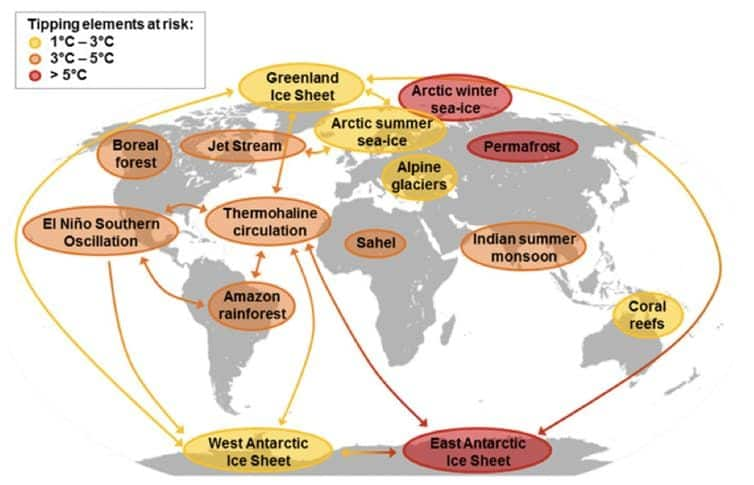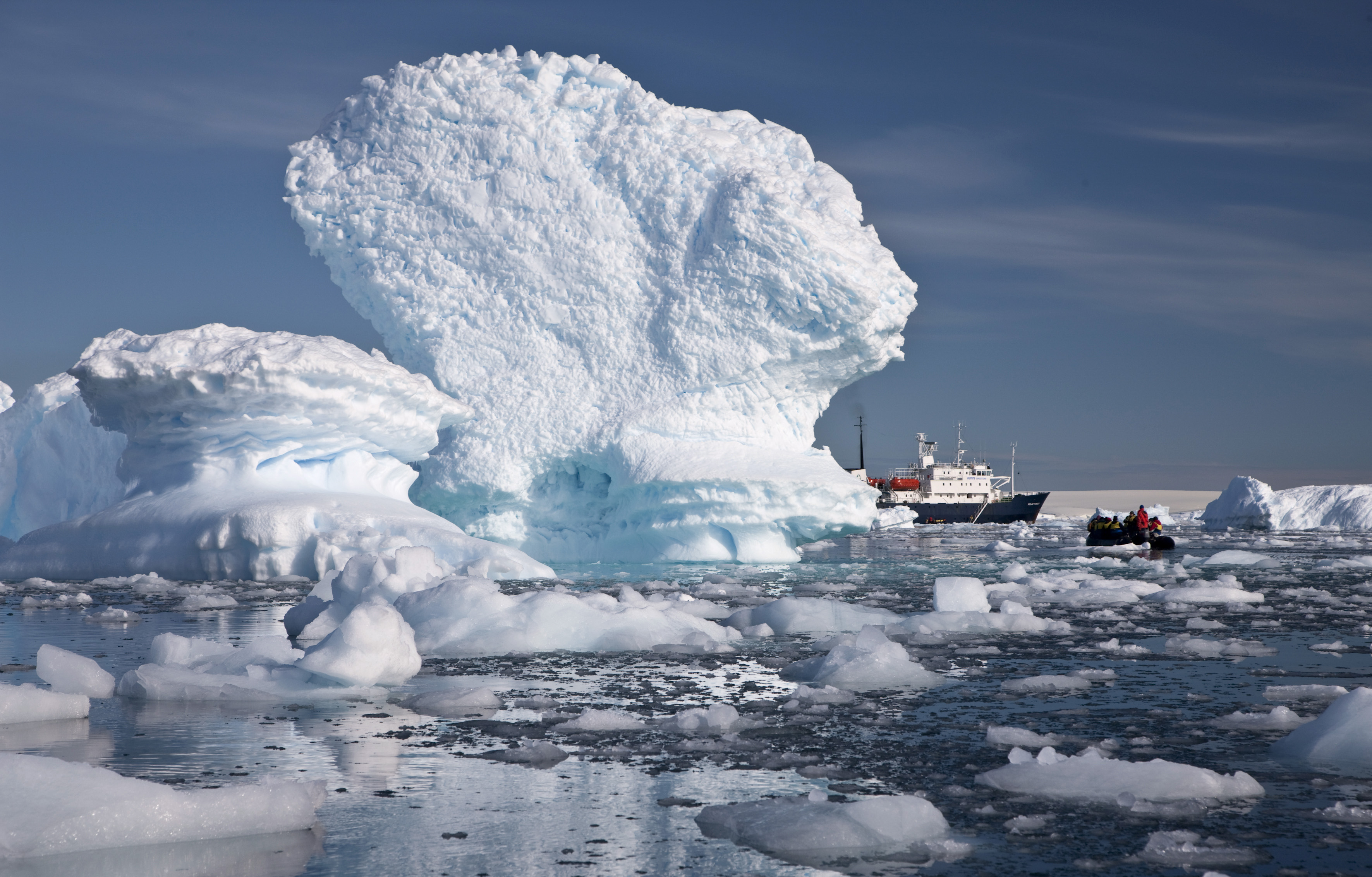Saturday February 8th… Dear Diary. The main purpose of this ongoing blog will be to track United States extreme or record temperatures related to climate change. Any reports I see of ETs will be listed below the main topic of the day. I’ll refer to extreme or record temperatures as ETs (not extraterrestrials).😉
What Troubling Record Warmth In Antarctica Could Unleash
Dear Diary: It’s only been about 48 hours since an all-time record high of 64°F has been reported in Antarctica. Every major news outlet has reported on this event by now, so what I will do today is tie in this record with an important tipping point factor, which I hope won’t be breached. Here is what is being reported by the Washington Post:
Reposting what my friend and meteorologist Matthew Cappucci wrote:
It comes days after Earth’s warmest January on record

Temperature anomalies for Friday as modeled by the GFS reveal a plume of very warm temperatures in Antarctica. (Climate Reanalyzer)
By Matthew Cappucci February 7
Just days after the Earth saw its warmest January on record, Antarctica has broken its warmest temperature ever recorded. A reading of 65 degrees was taken Thursday at Esperanza Base along Antarctica’s Trinity Peninsula, making it the ordinarily frigid continent’s highest measured temperature in history.
The Argentine research base is on the northern tip of the Antarctic Peninsula. Randy Cerveny, who tracks extremes for the World Meteorological Organization, called Thursday’s reading a “likely record,” although the mark will still have to be officially reviewed and certified.
The balmy reading beats out the previous record of 63.5 degrees, which occurred March 24, 2015.
The Antarctic Peninsula, on which Thursday’s anomaly was recorded, is one of the fastest-warming regions in the world. In just the past 50 years, temperatures have surged a staggering 5 degrees in response to Earth’s swiftly warming climate. Around 87 percent of glaciers along the peninsula’s west coast have retreated in that time, the majority doing so at an accelerated pace since 2008.
The WMO notes that cracks in the Pine Island Glacier “have been growing rapidly” in the past several days, according to satellite imagery.

A 2016 photo of Esperanza Base. (Andrew Shiva)
The recent spate of warmth owes to a ridge of high pressure that has lingered over the region for several days. High-pressure systems feature sinking air, which favors milder temperatures.
This effect was amplified on a local level because of a “foehn” wind, characterized by air sweeping down a mountain that begins compressing as air pressures rise near the Earth’s surface. That causes additional warming.
Moreover, a look at simulated atmospheric profiles around the time it hit the record indicated warmer air aloft than at the surface — meaning any air that mixed down to ground level could have had an additional leg up in warming.

It’s been an eventful year for climate extremes, and we’re only on Day 38 of 2020. January was the warmest on record globally, according to atmospheric monitoring group Copernicus, with records shattered in Europe and Asia. A number of locales in Eastern Europe and particularly Russia wound up more than 12 to 13 degrees above average.
[‘The warmth is really unheard of’: Europe just posted its warmest January on record]
“[This record] doesn’t come as any surprise,” wrote Eric Steig, a glaciologist studying climate change at the University of Washington. “Although there is decade-to-decade variability, the underlying trend across most of the continent is warming.”
He says this record will probably be broken again in the not-so-distant future.
“That warming has been particularly fast on the Antarctic Peninsula — where Esperanza is — in summer (the season [they’re] now in),” Steig wrote. “So we can expect these sorts of records to be set again and again, even if they aren’t set every single year.”
[Antarctica sets temperature record in 2015]
David Bromwich, a climate researcher at Ohio State University, noted, however, that while the Antarctic Peninsula has warmed strongly since the late 1940s, temperature trends in summer have been variable in recent decades, including a brief cooling spell since 1998. “So overall, this record looks to be a one time extreme event that doesn’t tell us anything about Antarctic climate change,” he wrote in an email.
Additional extreme warmth is likely in the Antarctic Peninsula in the coming days. Temperatures some 40 to 50 degrees above normal are predicted by some models.
Jason Samenow contributed to this report.
Here is more on the Antarctic ice tipping point that I wrote in 2018. You can find all fourteen tipping point factors expounded upon here:
https://guyonclimate.com/category/climate-tipping-factors/
Antarctic Ice
As we know, the vast bulk of water that could raise sea levels is trapped in Antarctic ice. Here is a quote from Scientific American:
https://www.scientificamerican.com/article/antarctica-meltdown-could-double-sea-level-rise/
“In the worst-case scenario, sea levels could rise around 50 feet by 2500. Even in a moderate scenario in which emissions stop after 2500, the long “thermal memory” of the ocean would prevent the ice sheet from growing back for centuries.”
Looking at Dr. Steffen’s chart the western part of Antarctica’s ice sheet is close to a tipping point at +1C to +3C above preindustrial conditions. The eastern end of the continent with considerably more ice than the western is thought to be much more stable and should not become a tipping point factor until average planetary temperatures get to +3C to +5C above preindustrial conditions. Just how stable has become a big question.
For reference here is that global tipping point chart by Dr. Steffen indicating roughly at what global average temperature above preindustrial conditions cooling factors helping to regulate the climate become warming, thus spiking surface temperatures higher even if CO2 pollution ceased:

Global map by Will Steffen of potential tipping cascades. The individual tipping elements are color- coded according to estimated thresholds in global average surface temperature (tipping points) (12, 34). Arrows show the potential interactions among the tipping elements based on expert elicitation that could generate cascades. Note that, although the risk for tipping (loss of) the East Antarctic Ice Sheet is proposed at >5 °C, some marine-based sectors in East Antarctica may be vulnerable at lower temperatures.)
From:
http://www.pnas.org/content/early/2018/08/07/1810141115#ref-12
Today I am going to repost most of what I wrote about Antarctica from this article from mid June:
It was definitely the top climate news in June 2018 with everybody and their mother writing articles or blogging about NASA’s new findings about the rate of Antarctic ice loss. I don’t want this site to parrot others, but I would be remiss if I didn’t mention new Antarctic assessments, which we will put in the old “how soon how bad” file. After reading some of the myriad pieces on the subject, which one can easily Google, I’ll just refer to this one article:
Quoting from Chris Mooney’s Washington Post article:
“Antarctica’s ice sheet is melting at a rapidly increasing rate, now pouring more than 200 billion tons of ice into the ocean annually and raising sea levels a half-millimeter every year, a team of 80 scientists reported Wednesday.”
“The melt rate has tripled in the past decade, the study concluded. If the acceleration continues, some of scientists’ worst fears about rising oceans could be realized, leaving low-lying cities and communities with less time to prepare than they had hoped.
“Antarctica, the planet’s largest ice sheet, lost 219 billion tons of ice annually from 2012 through 2017 — approximately triple the 73 billion-ton melt rate of a decade ago, the scientists concluded. From 1992 through 1997, Antarctica lost 49 billion tons of ice annually.”
“The study is the product of a large group of Antarctic experts who collectively reviewed 24 recent measurements of Antarctic ice loss, reconciling their differences to produce the most definitive figures yet on changes in Antarctica. Their results — known formally as the “Ice Sheet Mass Balance Inter-Comparison Exercise” (IMBIE) — were published Wednesday in the journal Nature.”
“The largest part of the continent, East Antarctica, has remained more stable and did not contribute much melt to the ocean during the period of study, the assessment says. However, in the past five years, it too has begun to lose ice, perhaps as much as 28 billion tons per year, although the uncertainty surrounding this number remains high.”
………………………………………………………………………………………………..
Unlike with Arctic ice it would take considerable Antarctic ice melt to expose brown land with a higher albedo, so a cascade effect will take much more warming for total destabilization. Antarctic glaciers will become more unstable as ice melts around the edges of the continent. The smaller the area of ice to melt interacting with warmer atmospheric and sea surface temperatures the faster the process will be, but even in worst case scenarios it will takes 500 years for the whole continent to melt.
Obviously civilization won’t be able to adapt too well to a 50 foot sea rise. Looking at studies coming out the last two years showing increased rate of melt and a more unstable eastern Arctic at +1.0C above preindustrial conditions, I’m asking has a tipping factor already been breeched? I’ll be reporting some better more definitive information with time on Antarctica. Pray that Antarctica remains stable. Put feet to your prayers by working hard to change the world.

In this Dec. 2, 2009 photo provided by Aurora Expeditions, an inflatable boat carries tourists past an iceberg along the Antarctic Peninsula. In a remote, frozen, almost pristine land where the only human residents are involved in research, tourism comes with risks, for both the continent and the tourists. (AP Photo/Aurora Expeditions, Andrew Halsall)
To summerize, record warmth that occurred this week in Antarctica is a warning shot that ice held on that continent will only become more unstable and melt faster with time. And of course:
Please consider donating through the Paypal widget on this site. I need everyone’s support to continue my work, especially that of processing NCEI record count data for scientific research.
Here is some more weather and climate news from Saturday:
(As usual, this will be a fluid post in which more information gets added during the day as it crosses my radar, crediting all who have put it on-line. Items will be archived on this site for posterity.)
Thankfully the globe has not warmed up in my part of the world to prevent kids from having a snow day (as of 2020). It will all melt by Monday, though, so kids won’t get a snow day away from school.😥
(If you like these posts and my work please contribute via the PayPal widget, which has recently been added to this site. Thanks in advance for any support.)
Guy Walton- “The Climate Guy”